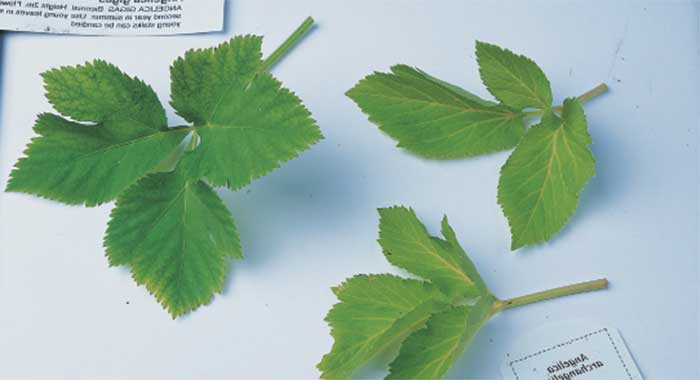
Pronounce it: an-gell-ik-ah
This sweet ‘herb of the angels’ is a member of the parsley family and was once thought to be a remedy against witchcraft, poison and plague. Its pale green, celery-like stalks stimulate production of digestive juices, improves the flow of bile into the digestive tract, and combats digestive spasms. Angelica is also used to flavor gin and sweet wines. Candied angelica is used to decorate cakes and desserts.
Availability
Sow angelica seeds in ordinary moist loam in in shady position in late August or early September. Cut the angelica stems down to their base in late June or early July.
Angelica is also available in health food shops.
Prepare it
Crushed angelica root can be made into a tea, using one teaspoonful per cup. Allow the root to steep for 10 to 20 minutes.
To make candied angelica, cut the shoots into strips and remove untidy bits. Blanch strips and candy them using gradually increasing strengths of sugar syrup. When they are done, dry them and keep them, but don’t throw away the syrup; it keeps for at least a year in the refrigerator and for a long time just in a jar.
Store it
Fresh angelica should be wrapped in damp kitchen paper, placed in a perforated bag and stored in the fridge. It will last for up to three days. Keep candied or dried angelica in a sealed container in the cupboard for around 4 months.
Cook it
As a tea, as a remedy for indigestion, candied as a cake topping decoration, in fruit salad, in ice cream. It goes particularly well with sharply flavoured rhubarb.
Alternatives
Try parsley.
Be the first to comment on "Angelica"